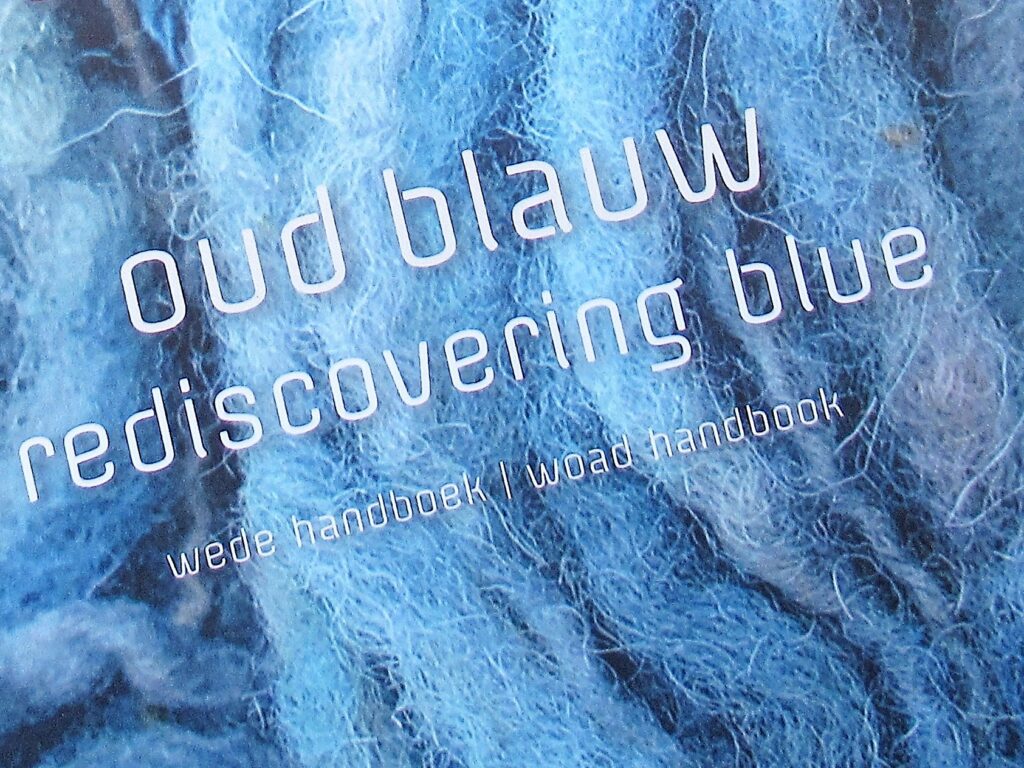
Hello!
There is no knitting to show you at the moment, I’m afraid. I’m busy writing up a new pattern and finishing a small and hopefully fun project from sock yarn leftovers that I hope to share with you soon. Until then, I thought I’d write about the Woad Handbook I’ve recently read. (For any of you who have missed my earlier posts about it here and here, woad is a dye plant that gives beautiful shades of blue.)
The word ‘handbook’ suggests a hefty tome, but Oud blauw: wede handboek/Rediscovering Blue: Woad Handbook is, in fact, a slender 15 x 21 cm/6 x 8” booklet.
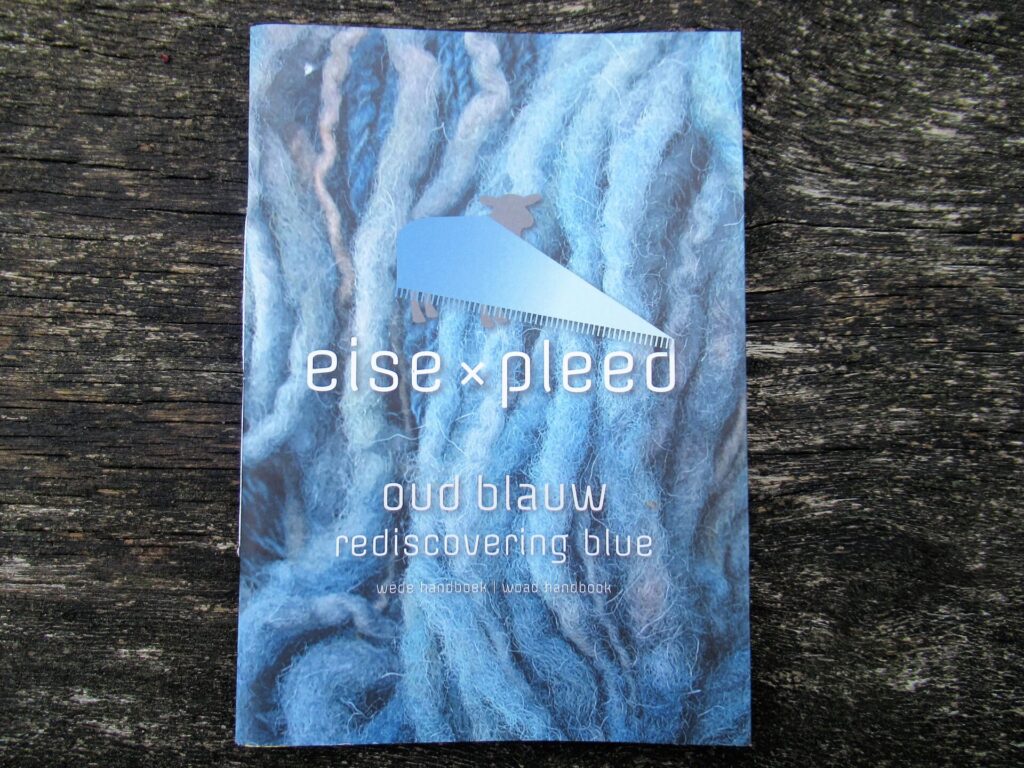
Despite its small size, it really is a complete handbook. In both Dutch and English it covers everything from a brief history of woad dyeing, to instructions for growing and using woad.
The booklet also tells us about Eise Eisinga, an 18th Century Frisian wool-comber, who didn’t just comb wool, but also traded in it and dyed it. This very interesting person, who as a hobby built an amazing planetarium, has left us his notebooks including his woad recipes. It is fun to try and decipher his handwriting in the fragment that is included in the booklet. The words blau (blue) and Indigo immediately jump out.
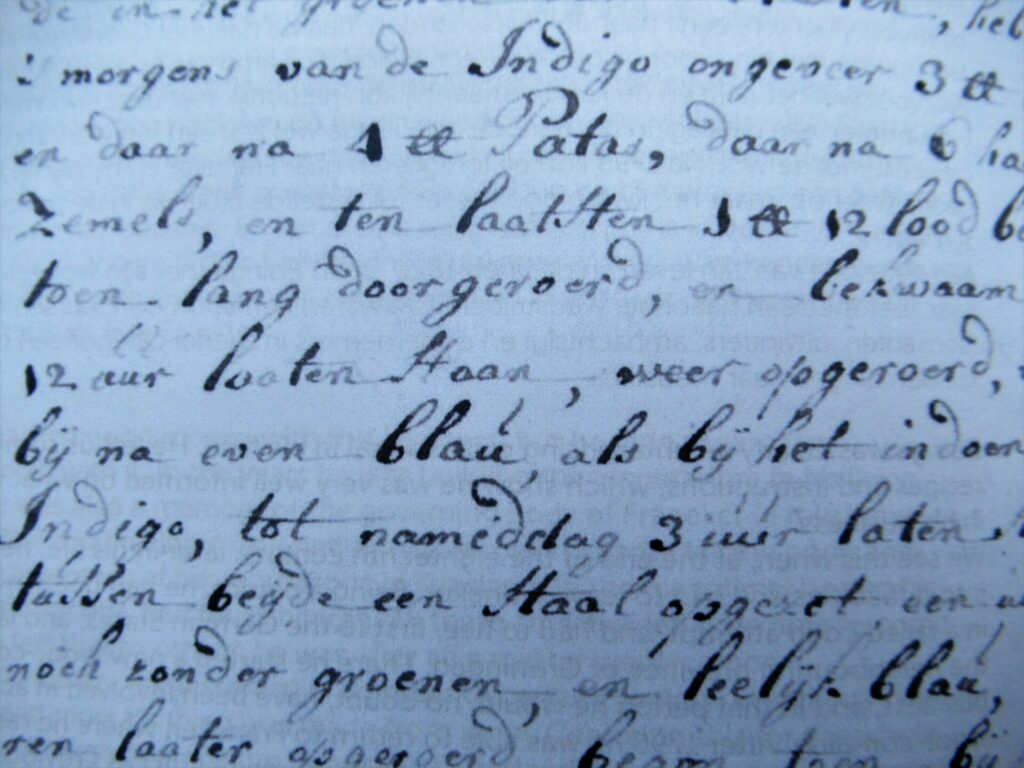
Even for people like me, who do not intend to do a lot of woad dyeing, it is an interesting read. And for me just looking at a page with yarn samples of the authors’ dyeing experiments makes the booklet worth having.
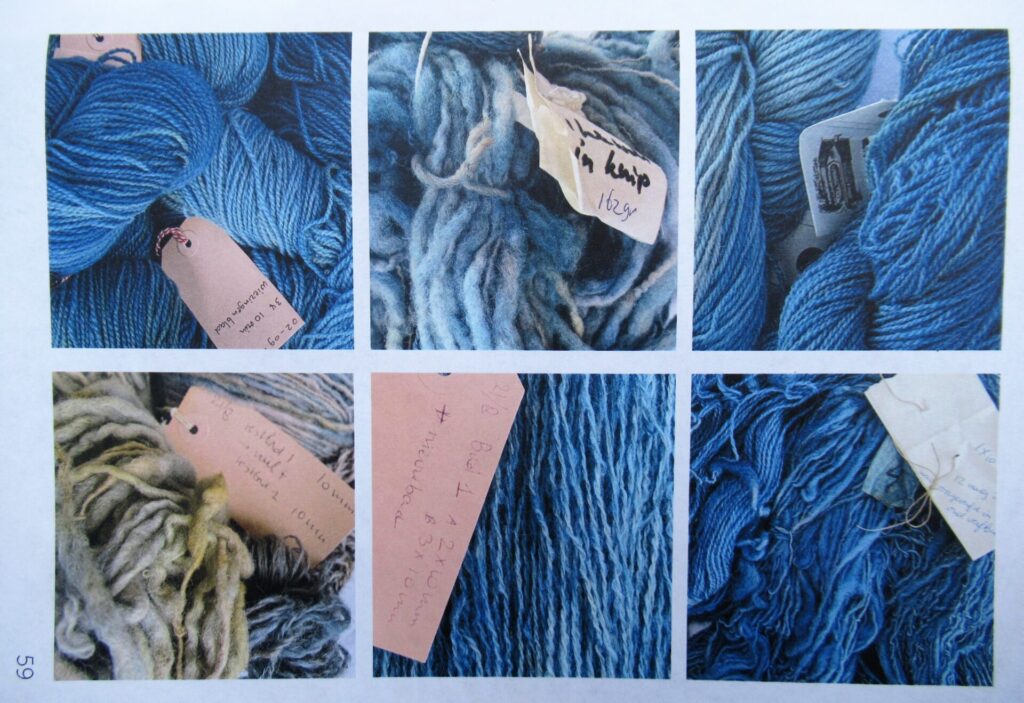
This woad booklet is part of the Pleed (pronounced as and meaning plaid) initiative, a community project aimed at using local wool to make things instead of treating it as waste and… well, this is what they stand for in their own words:
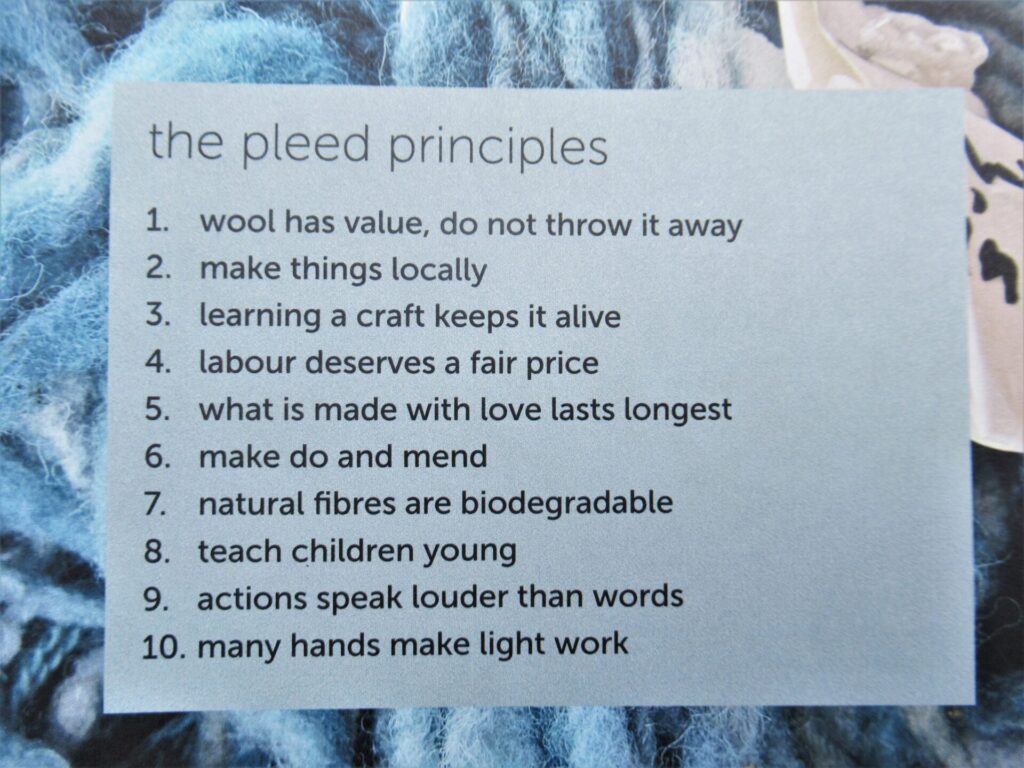
My attempt at growing woad wasn’t very successful in the first year. Slugs ate most of the leaves that should have been used in a dye vat. In the second year, the plants unexpectedly flourished and flowered profusely.
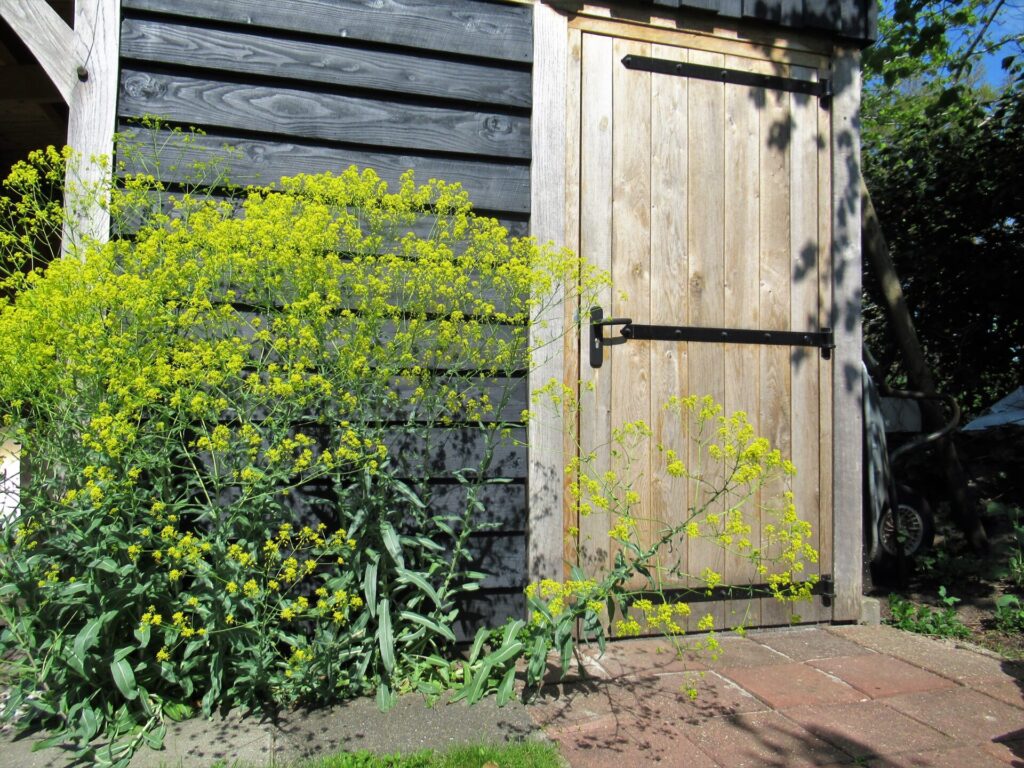
Unfortunately the plants do not contain any usable pigment at this stage. It is a biennial plant and only the first-year leaves can be used for dyeing. Never mind, at least I learnt a lot about woad and I will now recognize the plant anywhere. It looks very similar to (and is related to) oil-seed rape, only the leaves have a different shape and the flowers are finer.
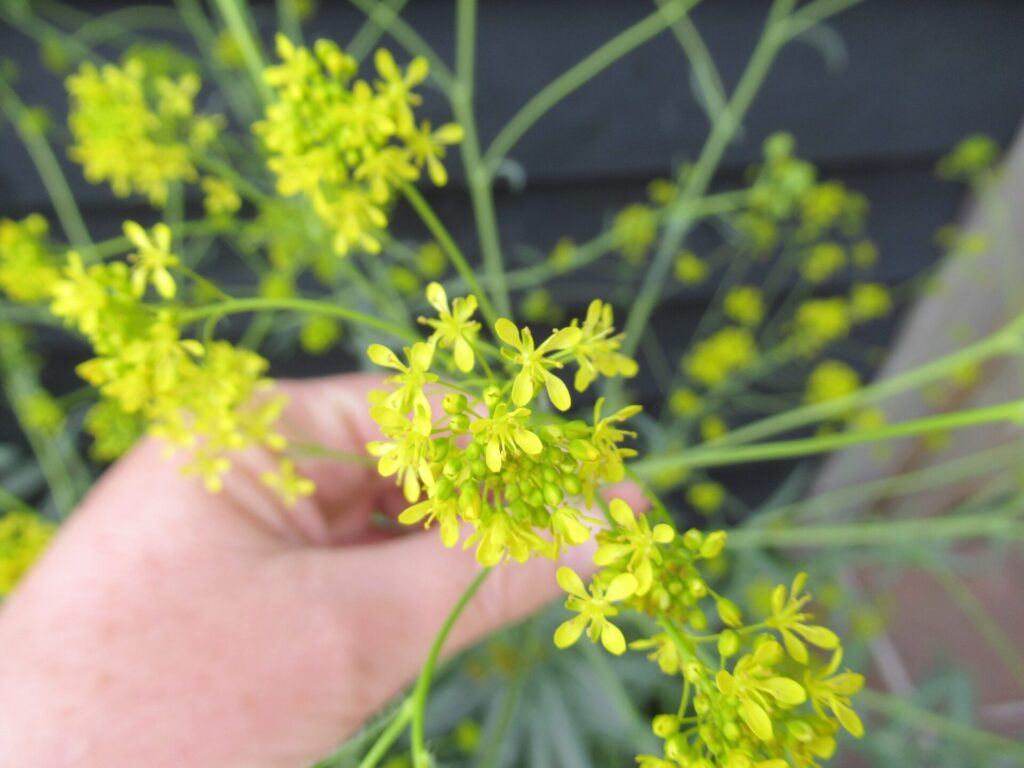
My plants are now setting seed. A lot of it.
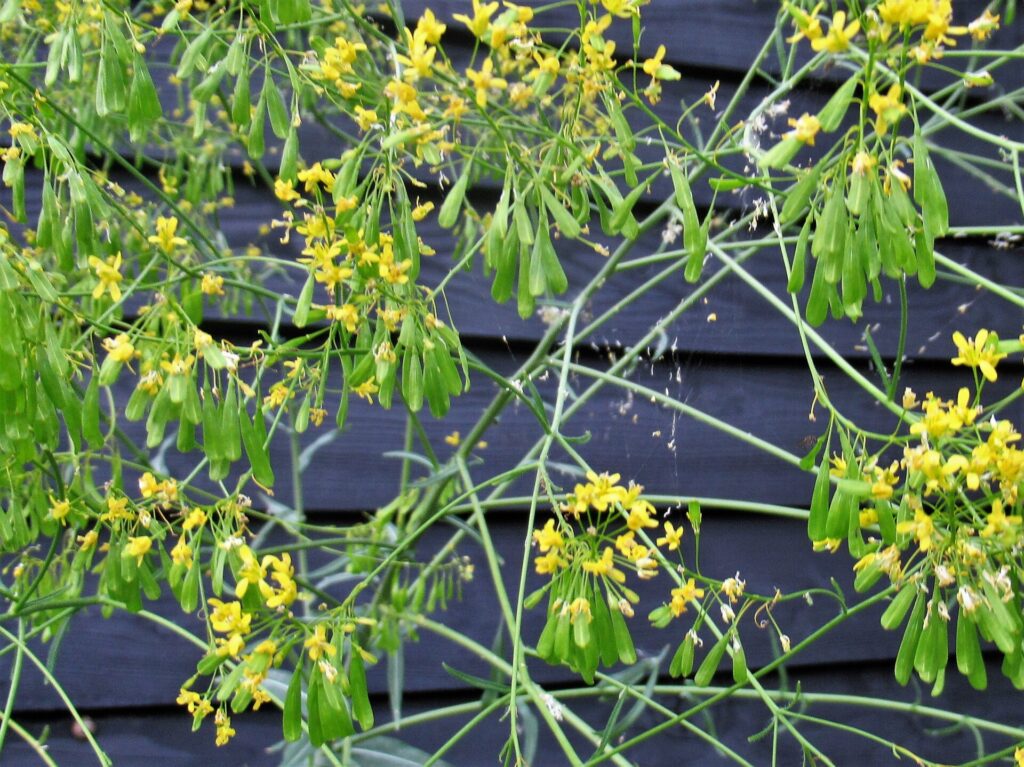
I could grow acres of woad plants with all those seeds, only I don’t have acres. I’ve heard that the seeds can also be used for dyeing. That might be worth looking into.
The Woad Handbook can be ordered through the Pleed website here (scroll down for an e-mail form). The Pleed people are also organizing an exhibition about the history and future of Dutch wool at the Frisian Agricultural Museum. Information about the exhibition 100% wol can be found here (again, please scroll down). Don’t despair if you live too far away – I hope to visit and write about it sometime during the summer.
Here are a few other links for anyone interested in woad:
- Bleu de Lectoure – French woad producers’ website with interesting background information and videos.
- All about Woad – British website telling us… all about woad.
- Swedish article about dyeing with woad.
- Wearing woad – a Canadian natural dyer’s website about sustainable clothing and dyeing, with woad in particular.
- Article about growing woad in the US on the website of Spin Off magazine.
I hope this was interesting even for non-dyers. If all goes according to plan, I’ll be back with a small gift for you next week. Hope to see you then!
Interesting! Thanks for the information. It is amazing what grows along the side of the road and in the fields, and that can yield such color.
Cheers!
Yes, you’re right, the colours ordinary looking plants can give really are amazing. Green plant, yellow flowers – blue yarn!